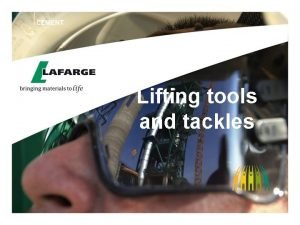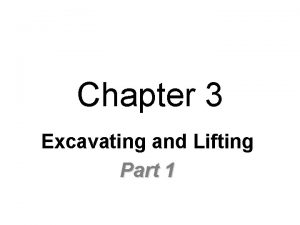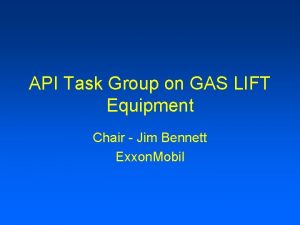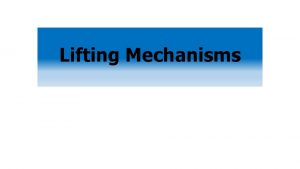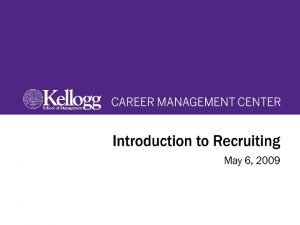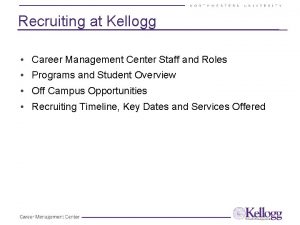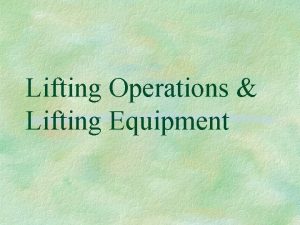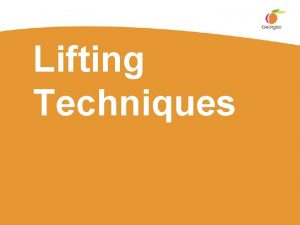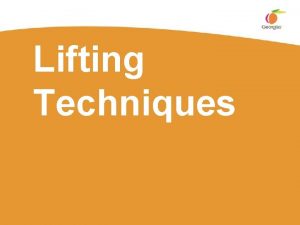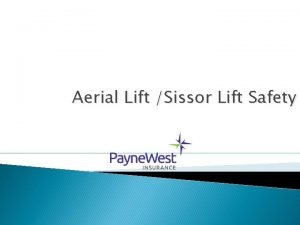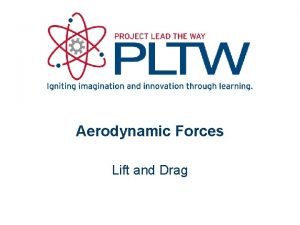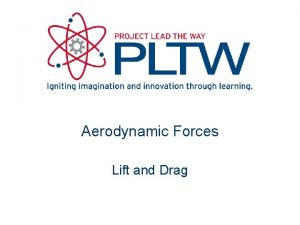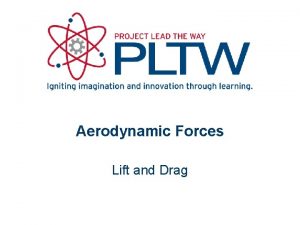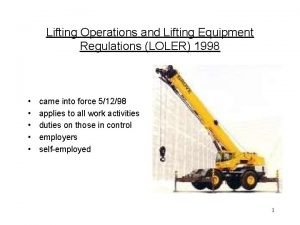Lifting Equipment Harkness Career Center Lift Types Framecontact

















- Slides: 17

Lifting Equipment Harkness Career Center

Lift Types – Frame-contact lift –Wheel-contact (drive-on) lift

Frame-Contact Lifts “Two post lift” • Uses air or hydraulic pressure to raise vehicle • Mechanical locks protect against hydraulic failure • Adapters at the end of adjustable lift arms

• Lift adapters contact vehicle frame at specified lift points • Unitized body -pads contact the pinch welds and the torque boxes • Straight frame -Pads contact the frame directly

• Some adapters adjust to several positions • Lift Pads should Be apposing each other

Frame-Contact Lifts • Symmetrical Lift – the arms on the lift are the same length. • Asymmetrical Lift the arms on the lift are two different lengths.

Wheel-contact Lifts scissor types Types four post

Wheel-contact Lifts • All four wheels supported • Also has mechanical locks • Works well for hard to lift vehicles

Wheel-Free Jacks • Are located in the middle of the drive on lift • Are used to raise vehicles off there wheels • Have mechanical safety locks • Operate on air and/or Hydraulic pressure

Wheel-Free Jacks • Picks up one end or both ends of the vehicle • Advantages of wheel contact lifts – Picks up off balanced vehicles safely – Center of underside is accessible – Adjusts to pick up different undercarriage designs – Can be rolled along driveon ramps

In-Ground Lifts • In-ground, frame-contact lifts are either single post or two post – Two-posts provide better vehicle access • Has safety locks • Are getting more popular – Do not pollute like they used to (hydraulic fluid leakage) • No posts in the way – Easier to get in and out of the car

Lift Safety • When a vehicle falls off a lift, usually due to carelessness, misuse, neglected maintenance

Lift Safety cont. • Pinch Points – Between the lift and the vehicle – Inside the lift posts – Hands must be on the operating handles when operating – NO ONE should be touching the lift when in use

Lift safety cont. • Rear-wheel-drive cars center of gravity is below the drivers seat • Front-wheel-drive cars center of gravity beneath the steering wheel • One- or two-post lifts, position vehicle’s center of gravity over the posts • Four-post models, position car between front and rear

Lift safety cont. • Rear-wheel-drive cars center of gravity is below the drivers seat • Front-wheel-drive cars center of gravity beneath the steering wheel • One- or two-post lifts, position vehicle’s center of gravity over the posts • Four-post models, position car between front and rear

Lift safety cont. Never exceed the manufacturers “Maximum Capacity” posted on the lift.

 Harkness career center
Harkness career center Tools and tackle
Tools and tackle Define harkness
Define harkness Socrates method of teaching
Socrates method of teaching Tina harkness
Tina harkness Cebeo filialen
Cebeo filialen Excavating and lifting equipment
Excavating and lifting equipment Gas lift equipment
Gas lift equipment Vex robotics lifting mechanisms
Vex robotics lifting mechanisms Principles of lifting and moving patients
Principles of lifting and moving patients 79 career clusters in the national career cluster framework
79 career clusters in the national career cluster framework Formulas for career success: résumés - assessment
Formulas for career success: résumés - assessment Dsc fsu
Dsc fsu Kellogg career center
Kellogg career center Creighton career center
Creighton career center Noteworthy characteristics example
Noteworthy characteristics example Kellogg career management system
Kellogg career management system Michael berry center
Michael berry center

